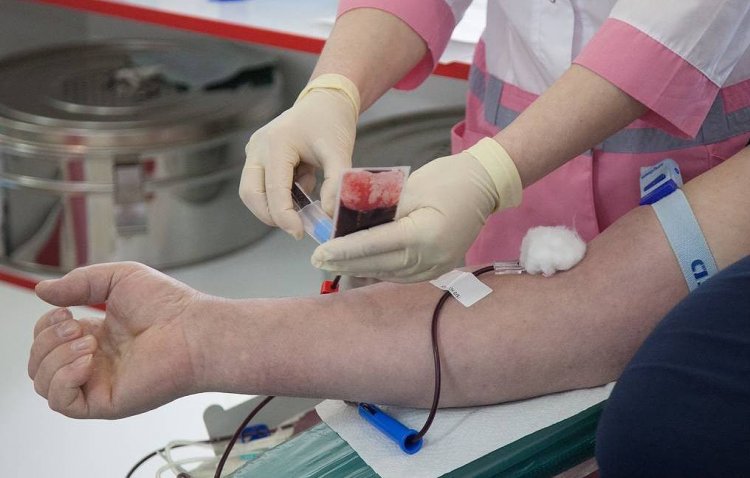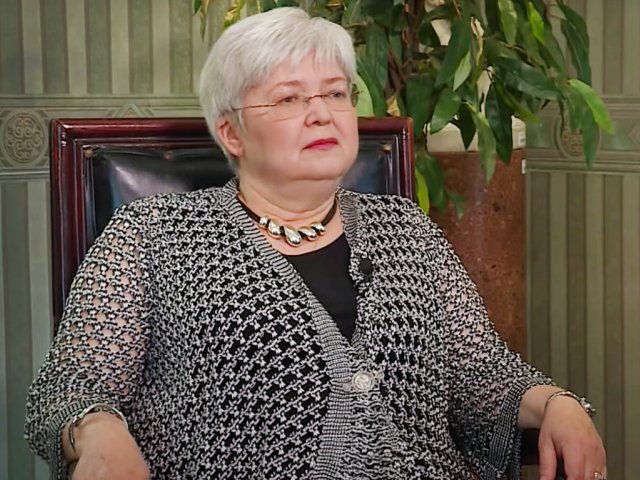Since 2007, April 20 has been the National Donor Day in Russia. It is on this day that events are held at blood transfusion stations to inform people about the need for blood donation, how to become a donor, how blood is donated and how to prepare for it. Safe blood and its components (plasma, platelets, red blood cells) are always needed. Blood saves lives. It is required in emergency cases, in response to natural disasters, during surgeries, for people suffering from fatal diseases, for mothers and newborns. Donor blood is also used in the production of medicines.
Donor blood is also used in the production of medicines. The process of blood donation is completely safe. New sterile disposable equipment is used for each donor, so there is no risk of contracting infections transmissible through blood. Nor can be COVID-19 virus infection transmitted during blood transfusion, experts say. It is very important that only a healthy adult who is allowed to give up as much as a half liter of blood can become a donor. After that, the donor needs several days to recuperate so that their body can replenish the lost fluid. The red blood cells previously lost will be regenerated after 14 days. Before a person becomes a donor, a full medical examination is needed including laboratory bloodwork, identification of the drugs taken, and providing detailed information about the history of infectious diseases and contacts with infected patients, if any. Finally, upon a positive appraisal, the person will be allowed to donate blood. For safety’s sake it is also important that donors comply with the rules established by doctors. So, men can donate blood no more than 5 times a year, and women, no more than 4 times.
Many are used to believe that blood donation is a fairly recent procedure. In fact, donation was recorded back in ancient times. First, multiple experiments were carried out on dogs, and only then the first blood transfusion from a lamb to a man was performed. But doctors did not take into account the fact that such a donation was accompanied by severe reactions and even fatal complications. Only in 1818, did the English professor of obstetrics and physiology James Blundell carry out the first successful human-to-human blood transfusion in the world using a syringe of his design.
The first Russian paper on the subject by S. V. Khotovitsky was published in 1830. Already in 1832, in the St. Petersburg-based Obukhovskaya Hospital, the first successful blood transfusion to compensate for blood loss after giving birth was performed under the guidance of obstetrician A. M. Wolf. In 1848, Russia's first monograph on blood transfusion was published, A Treatise on Blood Transfusion (as the Only Means to Save a Fading Life in Many Cases), Compiled Historically, Physiologically and Surgically, written by A. M. Filomafitsky, professor of physiology at Moscow University.
600 blood transfusions were performed worldwide in the 19th century, including 145 in Russia. Surgeons I. V. Buyalsky, N. I. Pirogov, S. P. Kolomnin used blood transfusion to treat wounded patients suffering from blood loss. Unique techniques of blood preservation and stabilization, along with its intra-arterial introduction were developed by Russian physicians.
In 1926, the world's first Blood Transfusion Institute was opened in Moscow. The Institute was headed by scientist, physician and philosopher A. A. Bogdanov. From then on, targeted studies in transfusion medicine began. The effects of blood transfer on the donor’s body, indications and contraindications for blood donation, organizational and ethical aspects of blood donation and blood bank operation were investigated. In 1927, monetary compensation for donating blood was legalized in our country, and since 1931, extra food rations have been available to donors for the fastest recovery of blood composition.
Over the past 11 years, the number of blood donors in Russia has increased markedly. According to a VTsIOM survey, 45% of Russians have been donating blood in 2019; 19% of respondents donated their blood more than three times; 14% donated two or three times, and 12% only have been donors once. According to the head of the Federal Medical and Biological Agency Veronika Skvortsova, blood plasma production volumes were increased 15% in 2020. To date, there are 269 specialized stations and blood transfusion units in Russia, as well as more than 500 medical institutions collecting donor blood. There are 25 blood transfusion stations in Moscow. The title of honorary donor in Russia is awarded to donors who had donated their blood free of charge more than 40 times. These people are awarded the Honorary Donor of Russia badge.
What are doctors’ guidelines concerning preparation for blood donation?
? On the eve and on the day of blood donation, it is prohibited to consume fatty, fried, spicy and smoked food, sausages, as well as meat, fish and dairy products, eggs, oil and butter, chocolate, nuts and dates, avocado, beets, bananas. No fasting is needed before donating blood! It is permissible to drink sweet tea and consume jam, juices, drinks from fresh and stewed fruit, mineral water, as well as bread, fried bread, bread rings, boiled cereals, pasta boiled in water without oil, vegetables and fruits, except for avocado, beets and bananas. In 48 hours prior to visiting a blood bank, one should not drink alcohol, and in the 72-hour period preceding the visit, no drugs containing aspirin and analgesics should be taken. Also, for an hour before the donation procedure, one should refrain from smoking. Doctors have found that the body reacts best to blood loss in the morning. Therefore, the earlier in the day the blood transfusion process occurs, the easier this procedure will be for the donor. Only regular donors are allowed to donate their blood in the afternoon hours.
Sources:
Blood donation development in Russia
Recommendations to Heed Before and After Donating Blood
FMBA has increased blood plasma collection amounts in 2020
VTsIOM: Share of blood donors in Russia has grown to 45% over the past 11 years
Russia Blood Bank Service – New Frontiers
Source of image in the text and on the homepage: TASS























